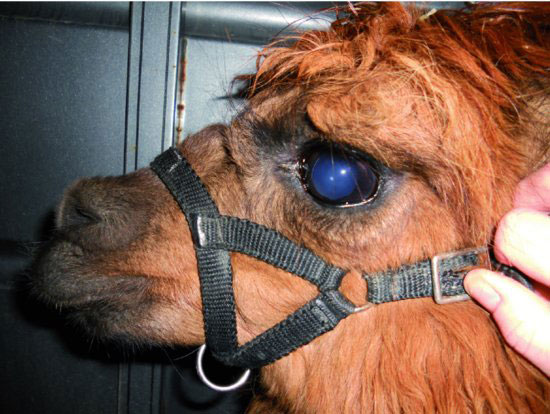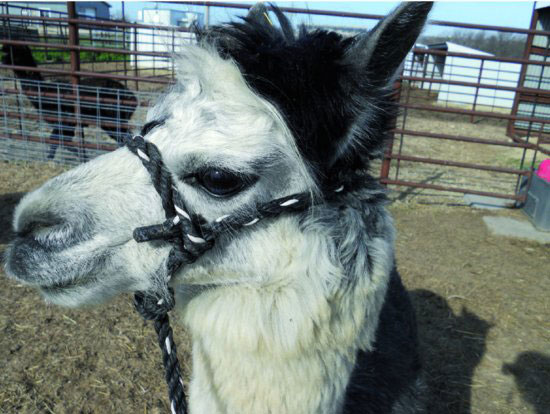RESTRAINT/POSITION
Standing, sternal recumbency cushed, or laterally recumbent positions may be used.
TECHNICAL DESCRIPTION OF PROCEDURE/METHOD
The handler should place one arm around the animal’s neck and gently slide the halter over the bridge of the nose, with the strap placed behind the ears and secured. All types of halters should be checked for proper fit. On a properly fitting halter, the portion over the bridge of the nose should ride over the caudal one-third of the bridge (Figure 2.1). The rostral one-third to one-half of the bridge of the nose is comprised of soft cartilage and is easily compressed by ill-fitting halters. This can occlude the nasal passages and cause the camelid to resist restraint because of an inability to breathe easily (Figure 2.3). Continued compression can lead to asphyxiation and death. During leading, the fit of the halter should be monitored, because the nasal bridge may also become compressed in reluctant animals that are pulled. Camelids should never be tied and left unattended. In uncooperative camelids, a huck towel, stocking cap, large sock, or other fabric can be tucked into the halter at the bridge of the nose to keep spit from hitting the handler (Figure 2.4). Lightweight fabric should not be used for this purpose due to the risk of the fabric being pulled to the nostrils with inhalation.
Figure 2.3 This halter is too small for this animal, as evidenced by the muzzle portion, which sits too far rostrally and is compressing the soft nasal cartilage of the nasal passage, restricting airflow.

Stay updated, free articles. Join our Telegram channel

Full access? Get Clinical Tree



